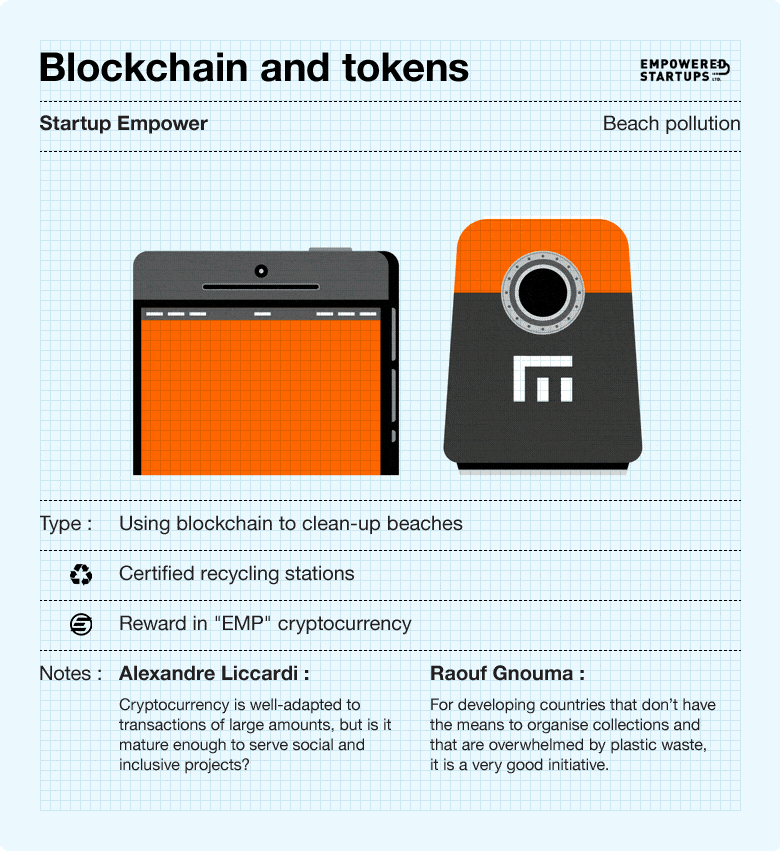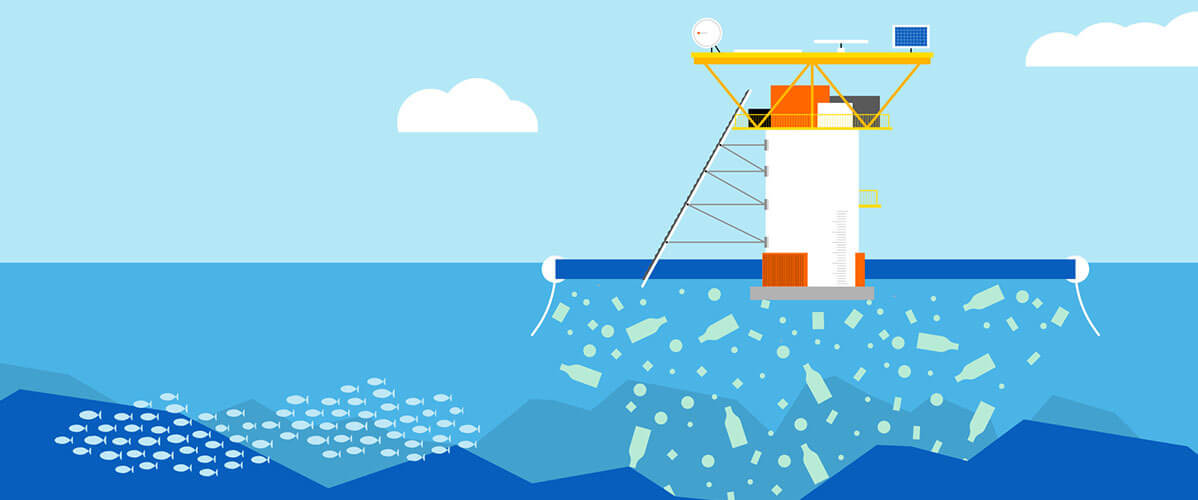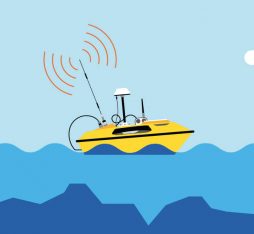Technological innovation also provides tools to directly address beach and ocean pollution. Alexandre Liccardi, Digital innovation and Big data Head of mission within the French Agency for Biodiversity (AFB) and Raouf Gnouma, director of the Water activity within environmental engineering consultancy BURGEAP; take a close look at two such initiatives.
New technologies at the service of the fight against pollution in aquatic environments and to facilitate the monitoring of ecological ecosystems.
Blockchain and tokens, with startup Empower

To use blockchain to clean-up beaches, that is the one-of-a-kind idea developed by Norwegian entrepreneur, Wilhelm Myrer. His startup Empower takes inspiration from the Norwegian deposit system to recycle bottles and plastic packaging that are polluting Indonesia’s beaches, a system that consists in bringing back empty bottles to shops and being given back the extra money paid at purchase, with shopkeepers then sending the bottles to waste processing centres.
Empower’s solution for beaches? To install certified recycling stations that provide an incentive to people who deposit plastic waste picked up from the beach, rewarding them not in the local currency but in “EMP”, a cryptocurrency whose token has a fixed value of one dollar. Financial incentive being a highly efficient approach to waste collection, and the target population being largely unbanked, the idea of cryptocurrency payment, as enabled by blockchain technology, seemed obvious to the developer.
This solution makes it possible to take part in ocean pollution reduction, whilst providing access to banking to disadvantaged populations.
Alexandre Liccardi. It is a valuable mobilising undertaking, as it proposes a new economic model that promotes financial independence while having an ecological aim. However, in terms of real economy, this approach doesn’t convince me entirely because cryptocurrencies are highly volatile (and EMP is no exception) and their use entails transaction fees that, once removed, lead to capital loss. Furthermore, from an environmental viewpoint, the calculations made by the blockchain technology imply high energy costs, which is obviously not the aim here: does the rule not apply to EMP? I do wonder if cryptocurrency, which is well-adapted to transactions of large amounts, is mature enough to serve social and inclusive projects. And also, if the target populations will have access to the media (an internet connection and a computer to use the tokens, at home, in internet cafés, via smartphones) and points of sale that accept cryptocurrencies.
Raouf Gnouma. It is an efficient approach in countries where the financial situation is complicated, and a very good means of motivating people to recycle waste. For developing countries that don’t have the means to organise collections and that are overwhelmed by plastic waste, it is a very good initiative. But I think that investments need also to be made to solve the problem at source, i.e. to reduce the amount of waste produced, build awareness of sorting, encourage recycling, or even transformation (such as cleaning plastic bags so as to re-use them as tablecloths, for example).
Floaters and algorithms, with The Ocean Cleanup project

The Ocean Cleanup is also taking on the “continent of plastic”, with the goal of reducing the amount of plastic floating in the Pacific Ocean by 50% every five years. Designed by Boyan Slat, a Dutch engineer and entrepreneur, a nacelle made up of a 600-metre-long floater at the surface of the water and a 3-metre-deep “skirt” attached below was launched off the coast of San Francisco in October 2018. Its mission? To collect the maximum waste… and data in order to feed algorithms that make it possible to specify the best deployment areas for this system. In effect, the floaters roam the ocean gyres (water swirls) autonomously and real-time telemetry facilitates monitoring of the state, performances, and trajectory of each system. Furthermore, the floaters rely entirely on the ocean’s natural forces and require no external energy source to capture the plastic. All of the electronic components used, such as lamps and LED lighting, run on solar energy.
Alexandre Liccardi. It is an interesting innovation as the use of algorithms makes it possible to position the floaters in an intelligent manner, i.e. in the right place, and to anticipate their trajectory. But what about its impact on fauna and flora? Several experiments on the insertion of floaters for environmental restoration have already been carried out on benthic marine populations – situated near to coasts. These resulted in the creation of new habitats, which are not always beneficial to the ecosystem. It is thus a question of carrying out an impact assessment upstream, which is needed in order to measure the environmental costs and the actual benefits of the project. Moreover, it could be of interest to consider another use for these floaters, that of taking part in scientific data collection, such as measuring currents. Currents having a priori altered power rates, in particular because of global warming, tracking them could be used in meteorology for example.
Raouf Gnouma. This innovation makes it possible to treat large areas and in this it is very positive, but I do wonder whether there is a risk that it will hinder other boats’ navigation, therefore maritime traffic. Furthermore, it should be ensured that it does not exploit natural resources to make its tools – the floaters, the skirts, the electronic components – and that it doesn’t generate new waste that is difficult to recycle.







